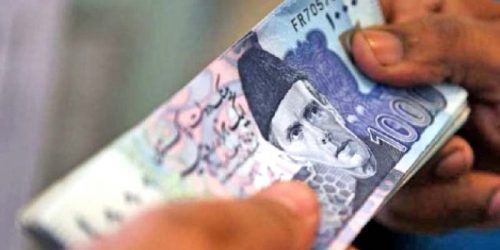ISLAMABAD:
The economic revival, which was observed in the first two months (July-August) of the current fiscal year 2020-21, may be hampered in September due to climatological events and inflation is also expected to rise, according to a monthly report released by the Ministry of Finance.
The Economic Updates and Outlook Report for September also revealed that the foreign remittances may further slowdown in the range of just $1.3 billion to $1.6 billion in September.
The report, released on Monday, stated that the cumulative remittances for the July-September quarter will still be higher than the corresponding period last year.
“The MEI (Monthly Economic Indicator) shows strong growth in the first two months of FY21, but the estimate for August may be revised later once the effects of the excessive rains on trade and manufacturing will become apparent in the official August large-scale manufacturing data”, according to the report.
The report further added that the economic rebound could be “hampered by the climatological events like in August 2020, but in that case, it is expected that any shortfall in economic activity will be recovered in coming months”.
For the current fiscal year, the federal government has set the annual economic growth target at 2.1%.
In its previous report, the Ministry of Finance had hoped that in the first quarter, the economy may grow by 1%. But latest report suggests a slowdown in economic activities.
It said that the international food prices, the international price of oil and the dollar/rupee exchange rate are all relatively stable in recent weeks. However, the Consumer Price Index (CPI) is still expected to be slightly higher because of positive growth in the first two weeks of the Sensitive Price Index, which captures price trends of essential kitchen items.
The headline inflation is expected to remain within a range of 7.8% to 9% in September 2020, where the higher and lower bounds of this range reflect probability intervals in model-based forecasts, said the finance ministry.
Overall, the global economy is now looking for paths to recovery from the Covid-19 crisis. During September 2020, the world economy remained on track of economic recovery as seen in the past months.
The finance ministry said that in the agriculture sector, the torrential rains during last two months damaged few crops in South Punjab and Sindh and this has increased the cost of production for the farmers. Area under cotton has been decreased by 12.2% as compared to the last year, which is a downside risk for the growth of overall crops. Sugarcane and rice are water intensive crops and better water availability will improve yield of these crops. Therefore, so far prospects for crop sector growth are mixed but livestock will benefit from green pastures and is expected to post healthy growth.
The presence of locust is restricted to Tharparkar in Sindh and Lasbela in Balochistan. Extensive survey in Pakistan is no longer required at present as there is no possibility of migration or breeding in any area except the desert regions of Sindh and Punjab.
Remittances
The finance ministry said that it was expected that during the first quarter of this fiscal year, workers’ remittances will remain in the range of $6.2 billion to $6.5 billion, compared to $5.4 billion in the same period of last fiscal.
The country has already booked $4.9 billion remittances during the first two months of the current fiscal and setting the maximum range at $6.5 billion means that in September, the remittances would not be more the $1.6 billion. If that happens, it will be the second month when remittances would be going down to the disappointment of Prime Minister Imran Khan.
Fiscal performance
At the start of the current fiscal, all major fiscal indicators witnessed improvement on account of fiscal consolidation efforts, said the ministry. In July of FY2021, fiscal deficit was contained at half percentage of the GDP or Rs 213 billion. Similarly, primary balance-total revenues, excluding interest payments, posted a surplus of Rs53 billion during July.
The fiscal deficit is expected to remain as targeted for the first quarter; however, the risk of high public spending due to Covid-19 may build pressure on the expenditure side, according to the ministry. Due to better performance of non-tax revenues, the primary balance is expected to remain in surplus in the first quarter of this fiscal year, it added.
Exports
Exports declined by 16.6% to $3.4 billion during the July and August period. The rains and consequential urban flooding, particularly in Karachi, caused significant problems in the existing infrastructure, disrupted the supply chains and affected the exports for the month of August.
But exports are expected to recover in the coming months owing to resumption of economic activities in the top export destinations for Pakistani goods.
During July 1 to September 11, money supply (M2) observed contraction of Rs169.3 billion, showing negative growth of about 1%. This means there was less money available for the private sector to borrow as compared to the last year when there was an expansion of Rs28.4 billion.





